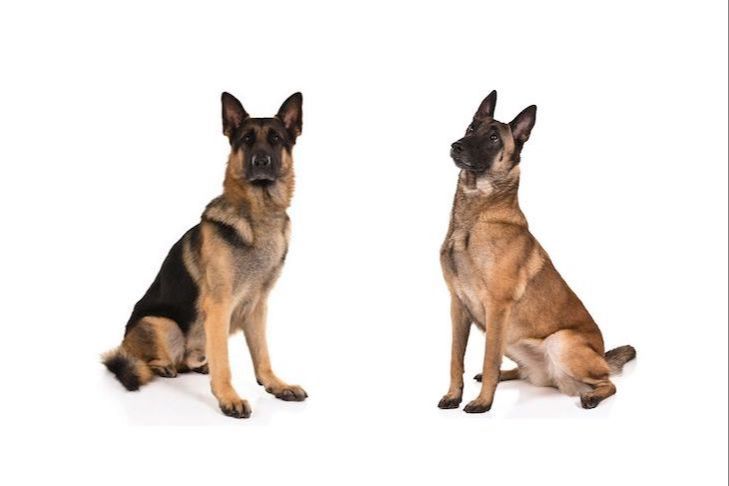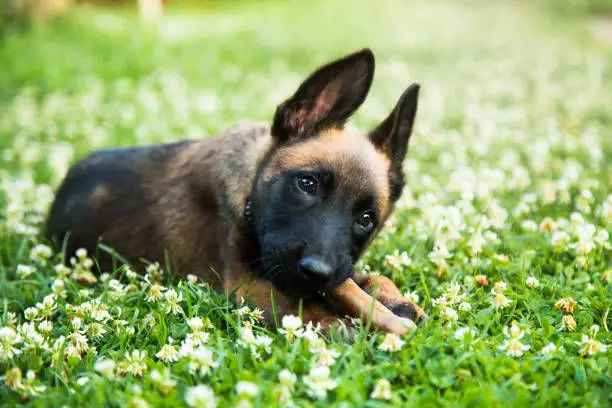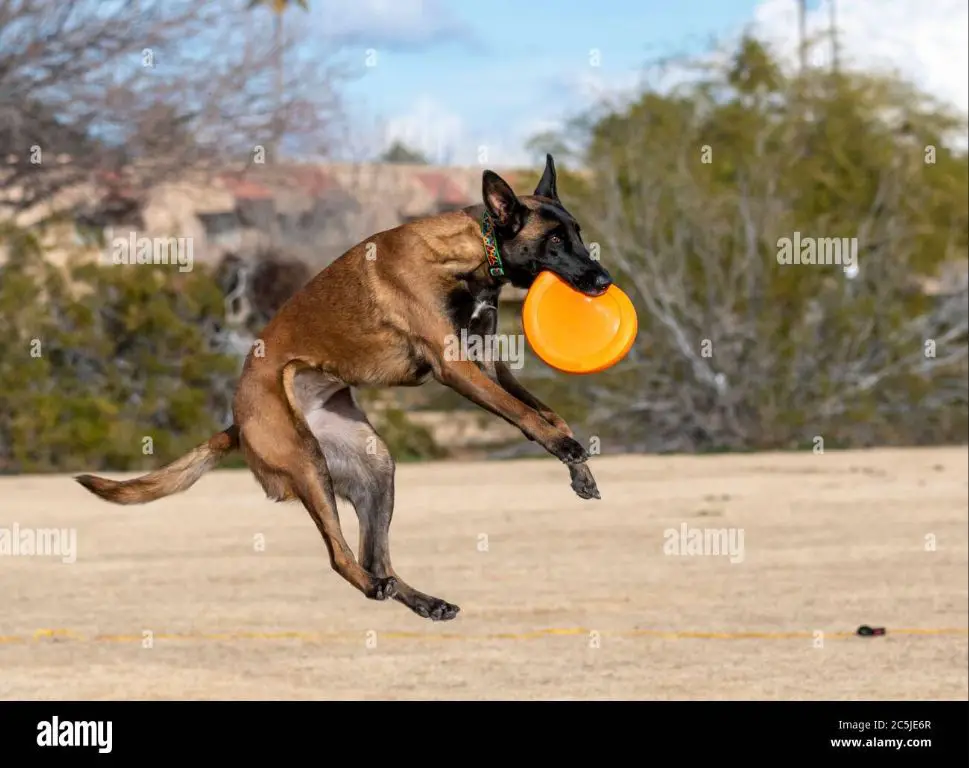Introduction
The German Shepherd and Belgian Malinois are two popular breeds known for their intelligence, trainability, and protective instincts. Both were originally developed in Europe as herding dogs – the German Shepherd in Germany starting in the late 1800s and the Belgian Malinois in Belgium in the late 1800s/early 1900s.
The German Shepherd was bred to herd and protect sheep, with a focus on intelligence, strength, and a strong work ethic. As their reputation grew, German Shepherds began to be used for many types of work including disability assistance, search and rescue, police and military roles, and acting as loyal family guardians.
The Belgian Malinois also worked as sheep herding dogs in Belgium. Their lighter, more agile build made them fast and energetic workers. Like the German Shepherd, the Belgian Malinois demonstrated an aptitude for police and protection work and continues to serve in those roles today. Both breeds exhibit strong protective instincts, but do have some differences when it comes to physique and temperament.
Physical Attributes

The German Shepherd and Belgian Malinois have some similarities and differences when it comes to their physical attributes. Both breeds are medium to large-sized dogs that typically reach 22-26 inches in height. However, the German Shepherd tends to be heavier, with males weighing 65-90 pounds compared to the Malinois at 40-80 pounds.
The German Shepherd has a double coat that can be black, tan, sable, all black or all white. Their coat is dense, straight and thick. The Malinois has a short, straight and weather-resistant coat that is fawn-colored with black masking on the muzzle. Some minor white markings are allowed by the breed standard.
In terms of appearance, both breeds have erect ears and a wedge-shaped head. The German Shepherd often has a sloping backline while the Malinois has a level topline. The Malinois generally appears more elegant and lighter boned compared to the more substantial German Shepherd.
Overall, while there are similarities in height, the German Shepherd tends to be larger in weight and bulkier in appearance than the lighter and more agile Malinois. The coat colors and type also differ significantly between the two breeds.
Temperament

The German Shepherd is known for its loyalty, trainability, and high activity level. According to Chewy, German Shepherds are born guardians with a natural protectiveness over their family and territory (Chewy). They are highly intelligent and obedient dogs that bond very closely with their owners. With proper training and socialization from a young age, the German Shepherd develops a calm, confident temperament. However, without training they can become overprotective and aggressive.
Belgian Malinois have a similar temperament to German Shepherds in terms of intelligence, trainability and loyalty according to How To Train The Dog. They have strong protective and territorial instincts that require experienced handling (How To Train The Dog). The Malinois forms extremely strong bonds with their handler. With proper socialization and training, the Belgian Malinois is very active, friendly, and eager to please. They thrive when given a job to do. Without enough stimulation, the Malinois may develop behavioral issues due to boredom.
Protective Instinct
Both the German Shepherd and Belgian Malinois are known for having strong protective instincts. This is one of the main reasons they are often used as police, military, and guard dogs. However, there are some differences in their protective natures.
The German Shepherd is very territorial and will alert owners to any perceived threat. They are naturally wary of strangers and quick to assess a situation as potentially dangerous. German Shepherds have strong guarding tendencies and will put themselves between their family and an intruder. However, they are also intelligent and can determine when a situation actually requires aggression (1).
Belgian Malinois are extremely alert and attentive to their surroundings. They are always on high alert watching for anything unusual or suspicious. The Malinois will let its owner know immediately if it senses an intruder. While territorial, the Malinois is better able to determine real threats from perceived ones than the German Shepherd. However, once a real threat is determined, the Malinois will act swiftly and aggressively to guard its family (2).
Overall, both breeds have strong protective instincts rooted in territoriality, high alertness to threats, and dedication to guarding their families. The main difference lies in the Malinois’ higher capacity to differentiate real versus perceived threats. However, the German Shepherd’s protectiveness is more indiscriminate, sometimes leading it to react aggressively in nonthreatening situations.
Training
Proper training is essential for developing a dog’s natural protectiveness in a controlled manner. Both German Shepherds and Belgian Malinois excel in training due to their intelligence, eagerness to please, and strong work ethic.

Obedience training builds respect between the dog and handler, establishing the handler as the pack leader. This provides the foundation for protection training. Key obedience commands for protection dogs include heeling, sitting, staying, coming when called, and most importantly – the “out” command to release upon cue.
Protection training develops controlled aggression through bite work, targeting, and scenario-based exercises. Trainers use equipment like bite sleeves, agitation, and hidden sleeves to stimulate the dog’s prey drive. The goal is to teach the dog to only bite upon cue in threatening situations. Proper training builds trust in the handler’s judgment.
Overall, the Belgian Malinois often displays more natural protectiveness, while the German Shepherd requires more nuanced obedience work. But with proper training, both breeds can become highly capable protection dogs. Consistency and an experienced trainer are key.
Source: https://identfy.nl/r1mkm7xk1
Real World Usage
Both German Shepherds and Belgian Malinois are commonly used as working dogs in police, military, and guard duties. Their intelligence, trainability, work drive, and protective instincts make them well-suited to these roles.
German Shepherds have traditionally been favored as police dogs. Their keen sense of smell allows them to track criminals, locate drugs and explosives, and find missing persons. However, some police forces are now transitioning to the Belgian Malinois due to their energetic nature and ability to work long hours (1).
The Belgian Malinois was originally bred to be an excellent sheep herding dog. Their herding lineage gives them strong protective and territorial instincts. Now, both the U.S. Secret Service and Navy SEALS use Belgian Malinois to safeguard officials and identify enemy combatants (2).
While both breeds work well as guard dogs, the German Shepherd is generally calmer, making them better suited to property protection. The Belgian Malinois has a more reactive nature and excels at patrol work.
(1) https://k10workingdogs.com/category/single-purpose-dogs/
(2) https://k10workingdogs.com/category/single-purpose-dogs/
Potential Downsides
Both Belgian Malinois and German Shepherds can develop aggression issues if not properly socialized and trained from a young age. However, some key differences exist between the breeds.
The Belgian Malinois has a strong guarding instinct and can be initially wary or aloof towards strangers. They may show aggression towards other dogs or animals they don’t know. According to this source, their aggression depends on early socialization and is not inherent to the breed. Proper training and socialization from puppyhood is essential for the Malinois.
The German Shepherd also has protective instincts but is generally more approachable and less suspicious initially. They tend to bond closely with their family while being cautious around strangers. With lack of socialization, German Shepherds can become fearful or aggressive towards unfamiliar people or animals. Consistent training helps them differentiate between threats and non-threats.
In summary, both breeds need extensive socialization and obedience training from an early age to prevent aggression issues. The Malinois’ stronger guarding drive may make them more prone to wariness around strangers if not properly managed.
Living Requirements
Both the German Shepherd and Belgian Malinois have high exercise and stimulation needs. They require daily, vigorous activity and play to prevent them from becoming bored and destructive. Plan on taking them for long walks and jogs or engaging in high-energy activities like playing fetch for at least 1-2 hours per day (source 1).

Mental stimulation is also important for these intelligent breeds. Training sessions, interactive toys like puzzle feeders, and having a purpose or “job” like herding, canine sports, or even doing tricks and commands will help keep their minds active (source 2).
In terms of space, having access to a securely fenced yard is ideal for both breeds. German Shepherds range from 50-90 lbs and 22-26 inches tall, while Belgian Malinois are typically 55-80 lbs and 22-26 inches tall. They need enough room to run around safely. Inside your home, be prepared to provide adequate space for them to play and move comfortably (source 1).
Overall, the German Shepherd and Belgian Malinois have very similar exercise, mental stimulation, and space needs. An active lifestyle and environment is required to keep them happy and well-behaved.
Which is More Protective?
Both German Shepherds and Belgian Malinois are known for being excellent guard and protection dogs. However, there are some key differences between the breeds that may make one more suitable than the other for protection work:
German Shepherds tend to be larger and calmer. Their sheer size can act as a deterrent to potential threats. They are intelligent and loyal, making them excellent watchdogs. However, some feel their protective instincts have been diluted through breeding.
Belgian Malinois are smaller and more energetic. They have lightning fast reflexes and high drive. Malinois will actively confront intruders rather than just alerting their handler. Their energetic nature also makes them more suited for apprehension work. However, their high energy requires an experienced owner to provide proper training and stimulation.
Ultimately, both breeds can excel at protection work with proper training and socialization. The choice between a German Shepherd and a Belgian Malinois really comes down to individual preference and lifestyle. Those wanting a calmer family pet who will deter intruders may prefer a German Shepherd. But for those looking for the ultimate protection dog, the Belgian Malinois is hard to beat.
References
John, Jake. A Complete Guide to German Shepherds. Best Dog Books Media. 2013.
Abraham, Christine. Your New Malinois Puppy. 4Paw Press. 2021.
Frank, Michael. Protective Dog Breeds. BarkTimes Publishing. 2020.
Lewis, Sophia. Training Guard Dogs. Kennel Club Books. 2018.
Walker, Emma. Belgian Malinois vs. German Shepherd: Which is Better for Protection? SafeHome Magazine. 2022.
Belgian Malinois and German Shepherd Comparison Chart. PerfectCompanionDogs.com. Accessed February 2023.